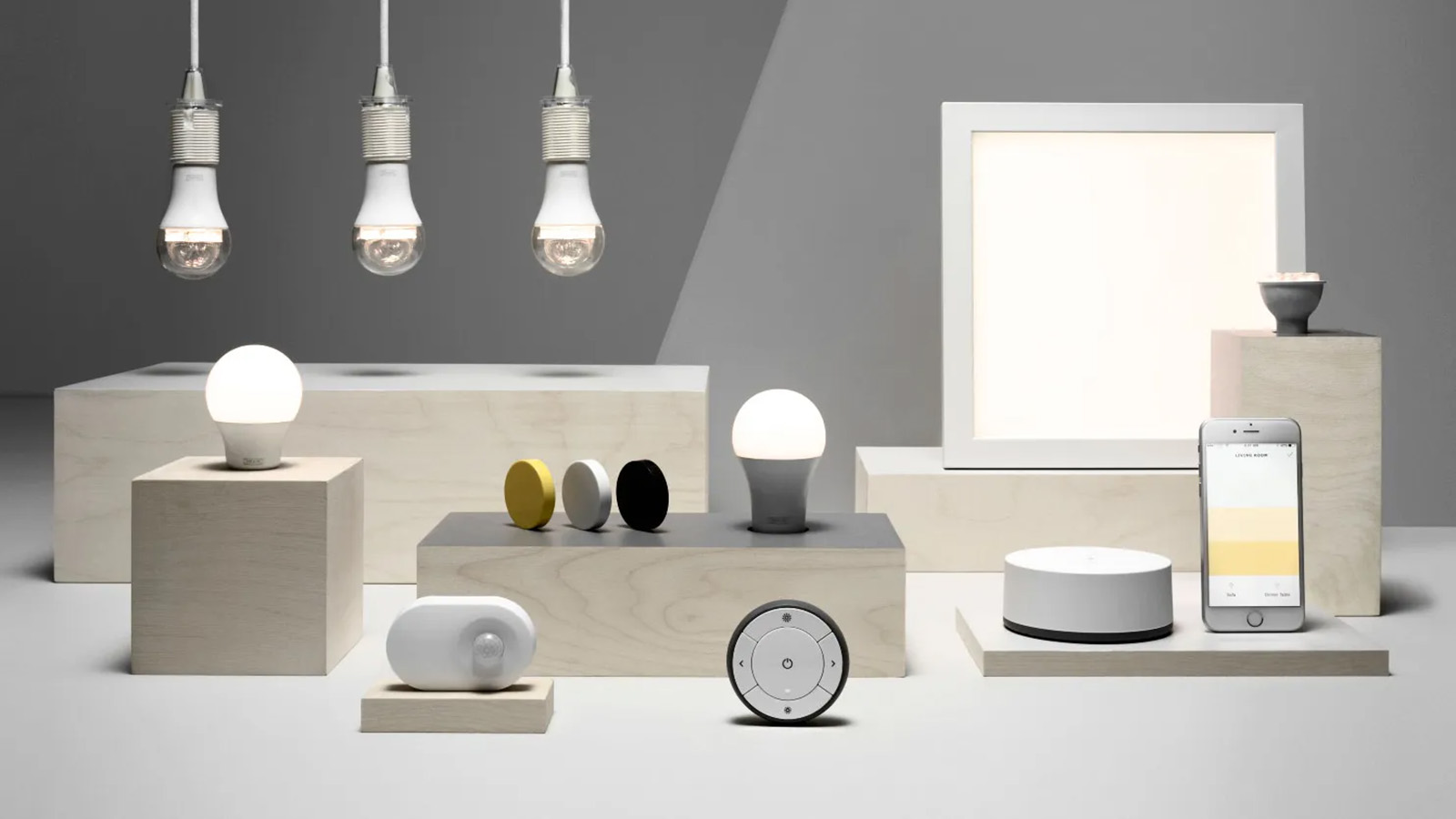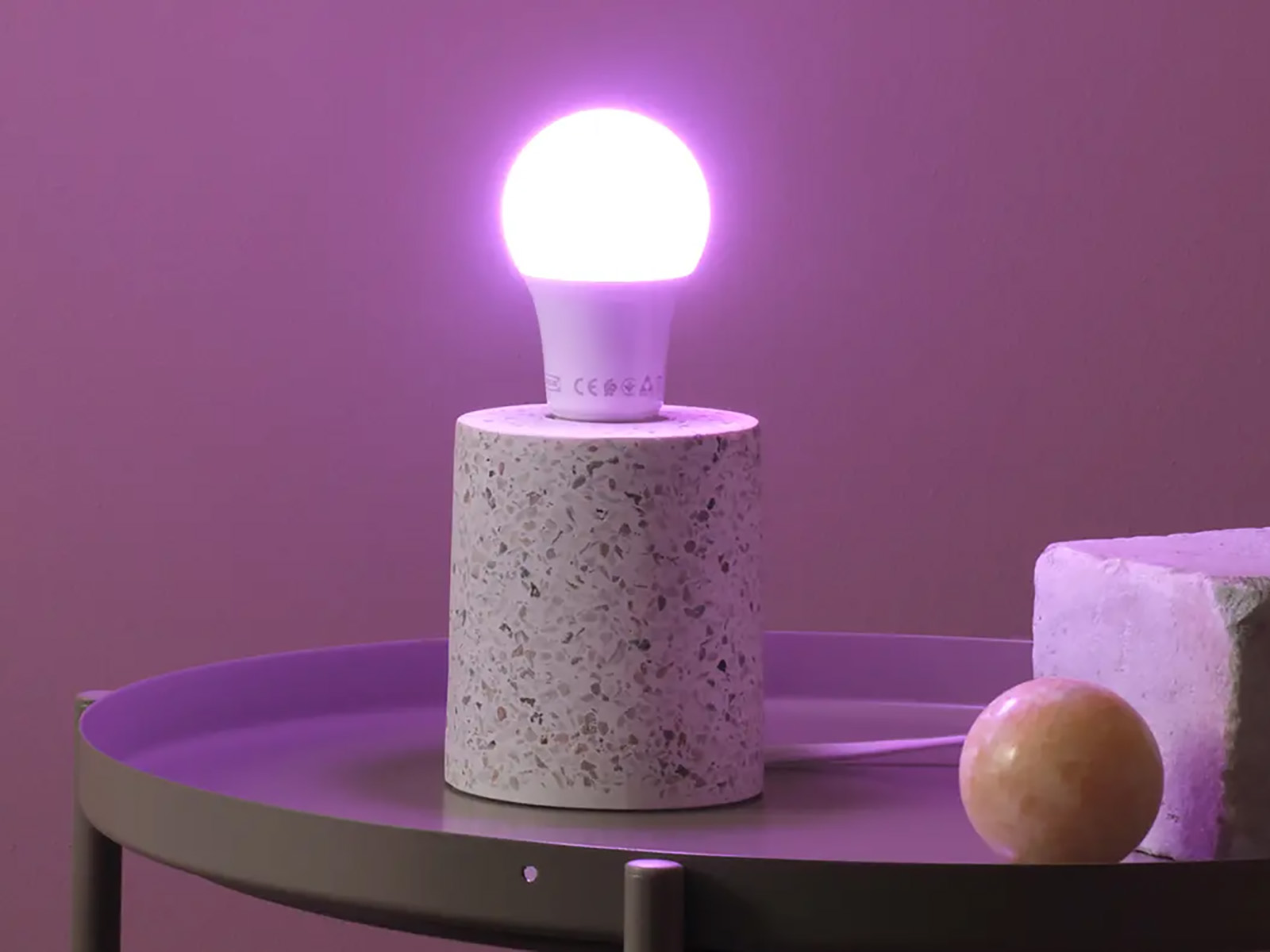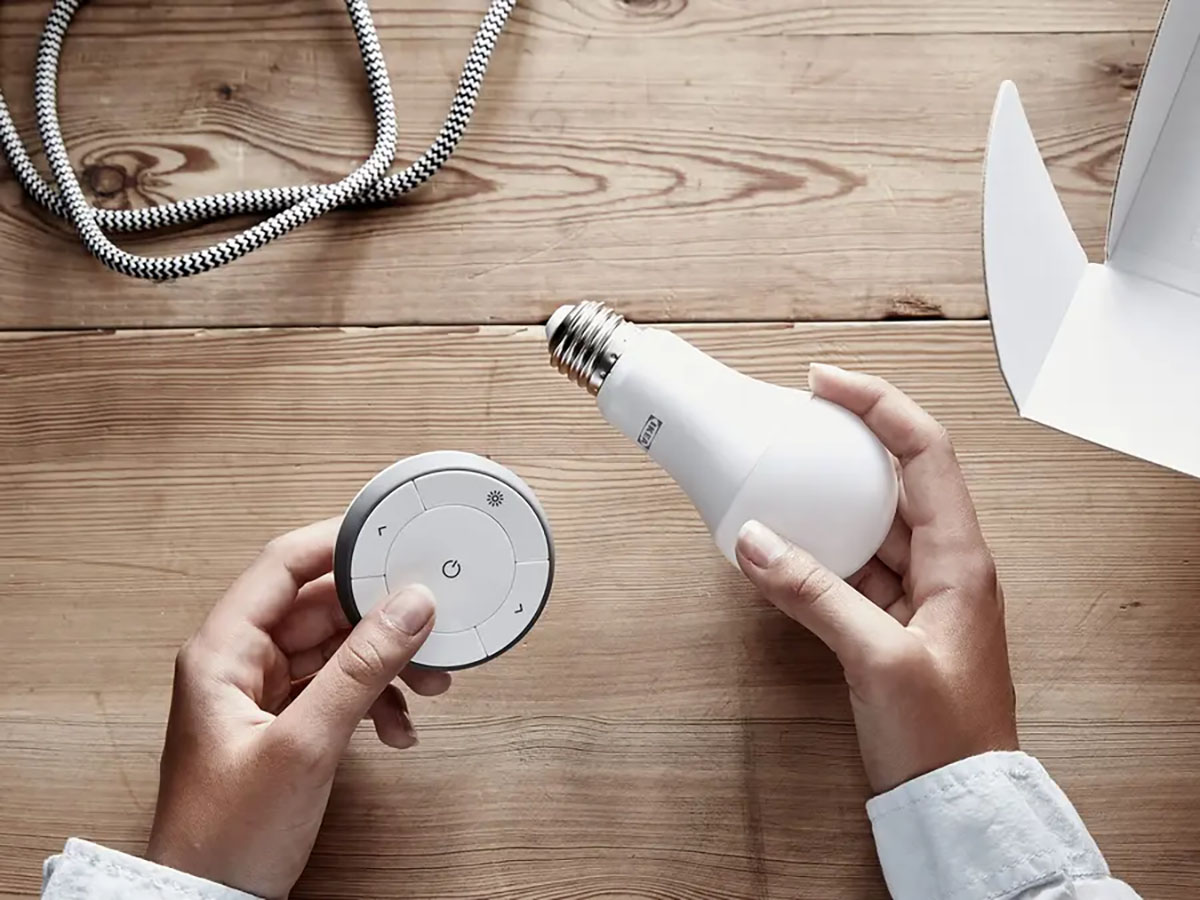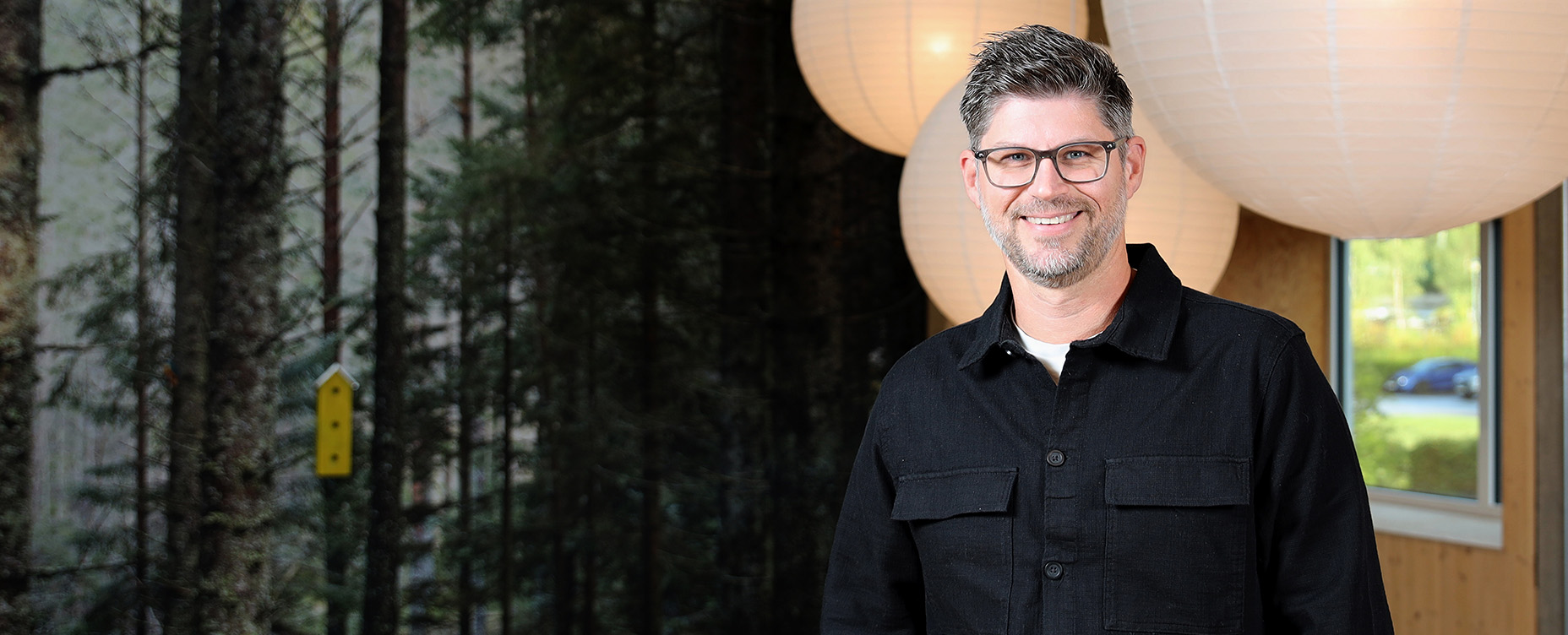Welcome to the Smart Home Founders series, where the people behind today’s smart home innovations share their stories. Today, we are speaking with David Granath from IKEA, where he serves as Range Manager of Lighting and Home Electronics. David leads the product team, setting strategies and guiding the development of IKEA’s smart home range worldwide.
Although IKEA is not a startup with a single founder behind its smart home division, the company has been steadily building its presence in this space for more than a decade. In this interview, David shares how IKEA approached smart home from the beginning, what they learned along the way, and how their upcoming Matter-over-Thread products will shape the future of affordable and accessible connected living.
Thanks for joining me today, David. Can you explain your role at IKEA Home Smart and how your team fits inside IKEA?
“Thanks for having me! First, I should say that in my view, there is only one true founder of IKEA Home Smart, and that’s Ingvar Kamprad. He founded IKEA more than 80 years ago, and his vision of creating a better everyday life for the people has shaped everything since. What we do in smart home today is just an extension of that spirit, not a separate founder-led venture.”
“My role is what’s called Range Manager of Lighting and Home Electronics. I lead the product team, set strategies, and look ahead to decide what we should work on in the coming years. IKEA, as a company, can appear somewhat complex from the outside. Inter IKEA develops the concepts, range, and brand, while franchisees run the retail side and operate the stores. My team is responsible for range development, creating and supplying the smart home range globally, and acting as a kind of gearbox between the different parts of the business. In short, we make sure that the products we develop actually reach customers all over the world.”
IKEA started exploring smart home over ten years ago. What drove the decision initially to enter this market?
“It really comes from our culture and vision to create a better everyday life for many people. That vision has guided IKEA for decades and is still as relevant today as it was when the company was founded. Many of us work here because we share those values, and that culture naturally shapes what we do.”

“At the time, we were already strong in lighting, so adding connectivity felt like a natural step. A static bulb only gives light, but a connected bulb can add convenience, atmosphere, and well-being. Moving into smart products was therefore less about chasing technology and more about continuing to deliver on IKEA’s vision in a new way.”
Early products, such as TRÅDFRI lighting, were among your first smart home launches. What lessons did you learn from those early releases, and how did they shape the future of IKEA Home Smart?
“I wasn’t directly involved in the very first years, but the main lessons learned are still very clear today. The first is simplicity. Most customers are not looking for a smart bulb; they just want a bulb that meets their needs. The wireless dimming use case was so successful because it felt almost magical, yet it required no installation or technical knowledge.”
“The second lesson was affordability. If the price gap between a normal bulb and a smart bulb is too high, people simply won’t switch. We also learned not to overcomplicate things, but to explain the benefits in very simple terms. Those principles of simplicity and affordability still guide our work today.”
IKEA also collaborated with Sonos on the SYMFONISK line. Why did you pursue that partnership? What potential did you see in it, and why did it eventually come to an end?
“Sound is a central part of life at home, but speakers have traditionally been treated as tech products rather than part of the home furnishing. We wanted to change that and make speakers that fit naturally into people’s living spaces. Since we are humble enough to acknowledge that we are not experts in every field, we sought a partner, and Sonos proved to be a very good match. They brought the audio expertise, and we brought the home furnishing identity. Together, we created a range of products that combined the best of both worlds.”
“Over time, though, both sides felt we had achieved what we set out to do. We had learned a lot, Sonos had reached its goals, and we decided not to keep doing the same thing. Affordability and simplicity were two of the biggest learnings. In some markets, for example, the lack of Bluetooth was a drawback, and the setup process could have been easier. Those insights are now shaping how we approach audio going forward.”
IKEA is now relaunching its audio lineup with new Bluetooth speakers, including Nattbad and Blomprakt. What is your vision for audio going forward now that the Sonos era is over?
“Our vision now is to create speakers that feel even more like home furnishing, come in different forms, and are extremely easy to get started with. We want customers to be able to pick one up in a store, bring it home, plug it in, and have it working right away. Bluetooth is important because it provides plug-and-play simplicity and also promotes affordability. With the experience we gained from Sonos, we know how to deliver really good sound. We can leverage IKEA’s strengths to offer products at a price that people can afford. The goal is to meet everyday needs with products that are approachable, functional, and easy to enjoy from the very first use.”
Which IKEA smart product has had the biggest impact so far, and which one would you consider a hero product?
“I would have to say the smart bulb. It is by far the product we sell the most of, it is the easiest for customers to understand, and it delivers a lot of value for a very low extra cost. When we do home visits around the world, we see how much light shapes daily life. In Sweden, for example, people often use many small warm lights in their homes. On the other hand, in China, it is common to have a single bright ceiling lamp. Neither is right nor wrong, but the smart bulb allows people to create the kind of light that suits them best.”

“With a connected bulb, you can dim, change the color temperature, or even automate the lighting during the day. That is not only about atmosphere, but also about well-being, since light influences how well you sleep, how focused you are when working, and how comfortable you feel in your home. The fact that we can offer that kind of impact in such a simple and affordable product makes the bulb our true hero product.”
Which markets or regions are showing the strongest adoption of IKEA smart products, and what factors are driving that growth?
“We sell smart home products globally, but adoption levels vary. The US is naturally strong, and in Europe, countries like the Netherlands, Sweden, and Germany are leading. These are markets where there is a tradition of curiosity toward new technology, a culture of startups and big tech companies, and universities that attract people who are open to trying new things. That combination creates early adoption. But our goal is not only to serve those tech-interested customers. We want products that anyone can use. A good example is my own mother — if she can set it up by herself and enjoy it, then we know we are on the right track. That’s when a product has the potential to reach many people, not just the techies.”
IKEA began with simple remotes and starter kits and later introduced hubs like TRÅDFRI and DIRIGERA. What is your current idea of the role a hub plays for customers, and how do you see that role changing as Matter becomes more common?
“The hub is in some ways a necessary evil. Nobody really wants a hub, but it has to be there because it enables important things like local control and stable mesh networking. Most customers do not care about those technical details, but the hub ensures the system works. For us, the hub is also a key to unlocking the app experience. That is where we can show customers what these products can really do in the home, beyond a simple remote and bulb. We are not trying to build a business model around selling services. Our ambition is simply to give customers a good first experience with smart home, so that the potential of these products becomes clear. Over time, hubs may become invisible, integrated into other products, but for now, they are still an important part of the system.”
You recently updated the DIRIGERA hub to act as a Matter Controller and Thread Border Router. What does that practically enable customers to do that they could not before?
“The update turns DIRIGERA into a true hub for the modern smart home. It now supports Thread and Matter 1.4, which means it can control devices from many different brands, not just IKEA. Customers can add third-party Matter devices to the Home Smart app and manage everything in one place. It also joins existing Thread networks, making the system more robust.”
“The result for customers is that setup is easier, devices work more reliably, and everything feels more seamless. They do not need to worry about whether something is Zigbee, Thread, or Matter. They just know that it works. At the same time, we believe that physical controls, such as remotes, remain essential. They are a simple, shared way for households to use smart products together, not just through one person’s phone. So the hub supports both worlds — a modern Matter ecosystem and the straightforward control methods people already love.”
Starting in 2026, IKEA will launch more than 20 new Matter-over-Thread devices. What types of products can people expect first, and will we also see Matter-over-Wi-Fi devices?
“The first big step is more of a technology shift than a change in what customers see. The range will include features and functions people are already familiar with in our existing devices, but the products will work better, connect more easily, and cost less. Affordability, interoperability, and simplicity have been the big barriers in smart homes, and this launch addresses all three. Customers can expect updated lighting, sensors, remotes, and other familiar product types, with improved performance and lower prices. We are also exploring Matter-over-Wi-Fi in the future, but the initial focus is on Matter-over-Thread. For customers, it means the setup will be simpler, devices will work more reliably across ecosystems, and the price points will be even more attractive.”
Many customers already own Zigbee-based devices from IKEA. How will you handle coexistence between Zigbee and Matter over Thread? Why was it important to keep features like Touchlink compatibility instead of moving fully away from Zigbee?
“This is something we have thought about for a long time. Matter has clear benefits, but we did not want to rush and risk leaving customers behind. Most people who buy a TRÅDFRI bulb and remote never connect them to a hub or app. They just use Touchlink to pair the two and are perfectly happy with that. Therefore, we retained Touchlink as a means to ensure backward compatibility.”

“With the same radio, we can support both Zigbee and Thread, ensuring that both old and new products continue to work together. An old bulb can still be controlled with a new remote, and a new bulb works with an old remote. If you want to onboard to a hub, it just uses Matter in the background, but the customer doesn’t have to think about that. The important thing is that the experience is smooth, and no one feels their products have suddenly become obsolete. That is what makes IKEA’s approach unique. We want to hold the customer’s hand step by step and make the journey simple and inclusive.”
Matter promises to solve the smart home’s interoperability problem. Beyond this, what do you see as the biggest barrier the industry must overcome before it truly goes mainstream?
“I don’t think there is just one barrier, but a few that all need to be solved. Reliability is fundamental — the software and hardware have to work consistently, or people will quickly lose trust. Then there is compatibility. Even though Matter is moving us in the right direction, today there are still different versions, different levels of support, and inconsistencies across ecosystems.”
“Customers need to feel confident that when they buy something with a Matter logo, it will work the way they expect. Finally, there is a mindset shift. Today, people still consider ‘smart products’ a distinct category. However, over time, the smart element will become an integral part of normal products, just as our phones have evolved from being smart to simply being phones. Once people stop distinguishing between a bulb and a smart bulb, and simply see lighting that adapts to their needs, that’s when the smart home will feel truly mainstream.”
If you could give one piece of advice to customers just starting with smart home today, what would it be?
“My advice would be to keep it simple and not feel like you need to understand all the technology. Look for the Matter logo — it gives you confidence that your products will work across systems. That’s a good place to start. Beyond that, think about what would actually make your everyday life easier. Maybe it’s turning all the lights off at once in the evening, or having the right atmosphere when you watch a movie. You don’t need to automate everything at once. Start small, get value from that, and then build step by step. Smart home is not about being complicated — it is about solving simple needs in a better way.”
Thanks for sharing the IKEA Home Smart story with us, David. Many people are eager to see what the upcoming Matter over Thread product lineup will bring.
“Thank you for having me. It has been a pleasure. We are very excited about the upcoming launch!”







